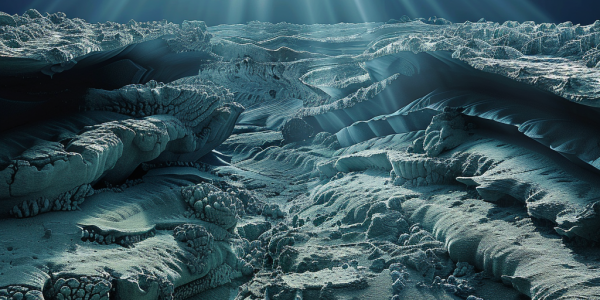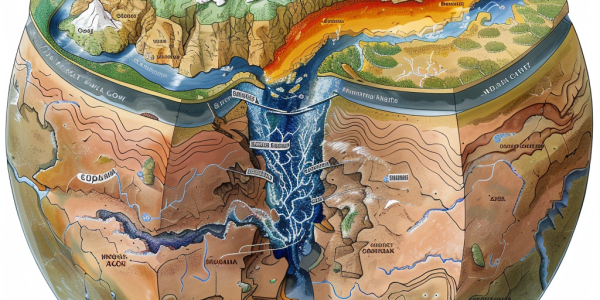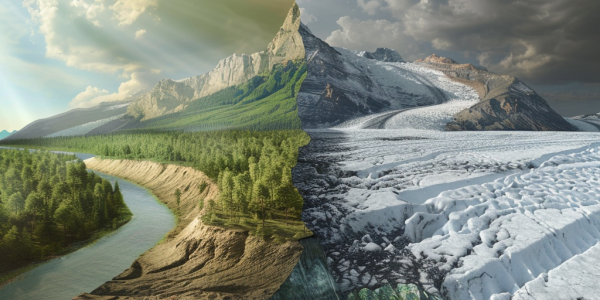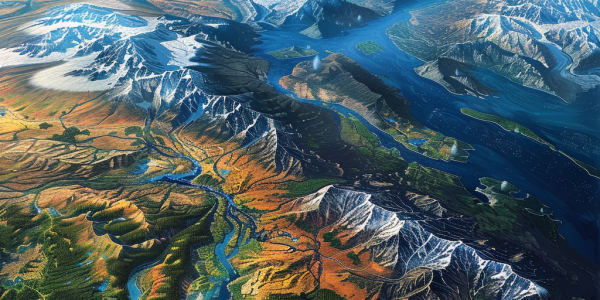Durham University Researchers Unveil Breakthrough in Understanding Turbidity Currents
Durham University scientists have made a groundbreaking discovery in marine geoscience by monitoring the Earth’s longest runout sediment flows using ocean-bottom seismographs. This research revealed two massive turbidity currents in the Congo Canyon-Channel, providing vital insights into their dynamics and implications for marine ecosystems. The study enhances our understanding of sediment transport and highlights the importance of interdisciplinary collaboration in advancing marine geoscience.
New Model Reveals Deformation Mechanisms of North China Craton
A recent study published in Nature Geoscience reveals the geodynamic mantle-flow model explaining the deformation of the North China Craton (NCC). Led by Professor Shaofeng Liu, the research uncovers the impact of the Izanagi plate’s subduction on NCC’s decratonization, offering insights into tectonic interactions and implications for seismic hazards in Northeast Asia.
Stanford Research Reveals Puzzling Sediment Absence During Eocene-Oligocene Climate Transition
Recent research from Stanford University reveals surprising insights into the Eocene-Oligocene transition, a significant climate shift 34 million years ago that led to the formation of Antarctic ice sheets and global sea level decline. Despite expectations of extensive sediment deposition, researchers found little to no sediment at continental margins, challenging existing models of sediment dynamics. This study highlights the need for deeper understanding of Earth’s climatic history and its implications for current climate change.
Exploring the Geological Heritage of the Pyrenees
Explore the exceptional geological heritage of the Pyrenees, home to ancient titanosaur dinosaurs over seventy million years ago. Unearth remains of the Pararhabdodon isonensis dinosaur in Pallars Jussà, showcasing a distinctive bony crest on its head. The VIGEOCULT project by the University of Barcelona utilizes virtual and augmented reality technologies to offer a 4D geological museum experience, highlighting the region’s evolution over 550 million years.
NASA Announces Six New Airborne Missions for Earth Day 2024
NASA announces six new airborne missions to study Earth’s changing planet, with a focus on topics like arctic coastal change, wildfire-influenced weather patterns, urban air pollution, and more. These missions aim to provide targeted insights into climate change impacts and Earth’s dynamic processes, emphasizing the importance of scientific findings for societal benefit.
The Role of Crustal Carbonate Build-Up in Earth’s Oxygenation
A recent study published in Nature Geoscience sheds light on the role of crustal carbonate build-up as a driver for Earth’s oxygenation, presenting a theoretical framework for the long-term global oxygen, phosphorus, and carbon cycles. The findings reveal that the accumulation of carbonates in the Earth’s crust has a significant impact on the planet’s oxygenation trajectory in both the atmosphere and oceans, providing valuable insights into the complex interplay between geological and biological processes that have shaped Earth’s atmosphere and oceans over billions of years.






